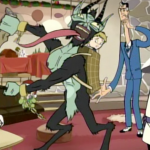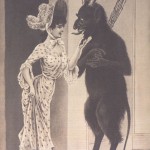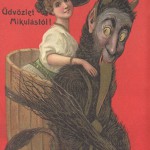In 2011 my informant published a the book, The Empire of Death: A Cultural History of Ossuaries and Charnel Houses. The book’s 260 photographs were gathered by Dr. Koudounaris over the course of five years, during which he traveled to 70 different locations around the world, studying, visiting, and photographing charnel houses.
Dr. Koudounaris’ travels took him to the Catacombe dei Cappuccini (the Catacombs of the Capuchin monastery) in Palermo, Italy. Part of his process of learning about the catacombs included talking to the various fruit and flower vendors who sold their goods across from the monastery. Because the fruit and flower vendors are directly across from the monastery, they know everything that went on there and were able to tell him a variety of ghost stories about the monastery.
“The fruit and flower vendors are an incredible source of information. It’s hard to understand if you live in our type of society. Ya know, a street vendor, in societies like this is a source of incredible information. The fruit and flower vendors are across from the monastery and they know everything that goes on in the monastery. And everyone goes—it’s not like they go to super markets, they go to these vendors—so they are an incredible source of information if you really want to know what goes on in societies like that.”
The story is as follows:
“This one—they call him the postman because he is a wandering ghost. El Postino. He’s not really a postman. All the people down there were high class. He continually returns to people’s homes like a postman and um… El Postino, it’s funny because a friend of mine is actually related to him. His last name is Spinoza and a friend of mine named Jean Spinoza is related to this mummy. He had apparently—this ghost had been sneaking into this beautiful girl’s house in the 20th century and stealing her underpants. He kept coming into her home making sexual advances to her and when she refused him, her underpants started to disappear so she told the monastery about this—that she believed he was a panty thief. Anyway, the public became very outraged as the story grew, that this girl’s underpants were disappearing and that this ghost kept coming to her house so the monastery was forced to allow inspectors to come in and check the premises and apparently behind the mummy in his niche they found some women’s underpants which—ya know the monastery insisted that someone had planted them there, but it seemed by accounts that the mummy had been stealing the underpants. So she was able to get a court injunction prohibiting the mummy, or the ghost more precisely from entering her home. Um… but he violated it because more of her underpants disappeared so the court demanded that the monastery rectify the situation, which… what are they going to do? How can they monitor this ghost? So they went to his mummy and threatened him with burial unless the woman’s underpants stopped disappearing and that apparently did it. He stopped harassing the woman after that.”
When El Postino was ordered by a court injunction to stop stealing the woman’s underwear, it is no surprise that his actions did not cease as any repercussions for violating a court injunction do not apply to the dead. What does apply to El Postino however is the belief of the Capuchin order that the body must be preserved for the coming resurrection. Thus it may be inferred that it was because of this belief that El Postino stopped stealing underwear only when threatened with a burial that may not preserve his body in the same way that his current entombment has.










